Reusable rockets: an economical solution for a quick global strike
The revolution in the creation of reusable spaceships
At the beginning of the XXI century there was a revolution in space exploration. Quietly, almost imperceptibly, without multibillion-dollar national projects such as the program for the exploration of the moon or the program for the creation of reusable spacecraft Space Shuttle. Of course, we are talking about commercial reusable spaceships, and first of all reusable SpaсeX rockets Ilona Mask.
Synchronous landing of reusable spacecraft boosters Falcon Heavy
However, he did not rest on his laurels for long; other private companies, including Chinese, breathe in the back of his head. For example, on 10 on August 2019, the Chinese company LinkSpace launched the RLV rocket, which, having soared to a height of 300 meters, returned to the launch pad on its own in 50 seconds. In 2020, it is planned to launch the RLV-T16 rocket, which can reach an altitude of 150 kilometers. Private companies plan to build reusable spaceships for all ranges of possible loads - from several hundred kilograms to tens to hundreds of tons.
The widespread use of reusable spacecraft capable of being reused up to 100 times, and up to 10 times without carrying out repairs, will significantly reduce the cost of launching a payload into orbit, which in turn will spur the development of the commercial space market.
There is no doubt that the possibility of putting payload into orbit at a lower cost will also interest the military. First of all, these will be traditional reconnaissance and communications satellites, the need for which is increasing all the time, taking into account the increase in the fleet of long-range unmanned aerial vehicles (UAVs), which are controlled via satellites.
In the future, the ability to output payload at a minimum cost may lead to space-to-surface orbital shock platforms.
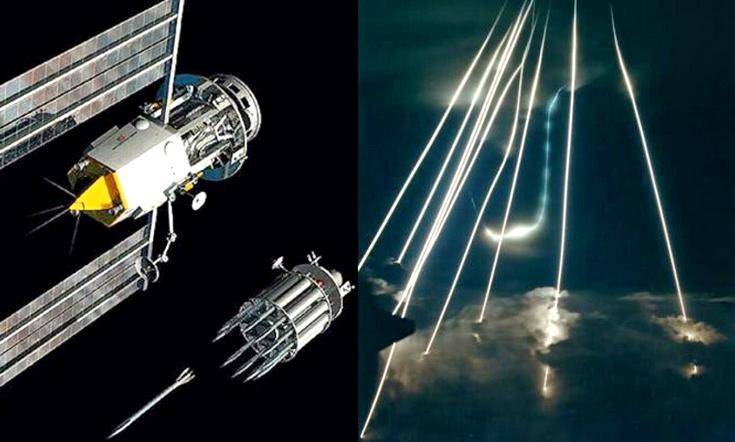
However, reusable commercial missiles may have other military uses.
Planning hypersonic warheads
Since 2003, the Defense Advanced Research and Development Agency (DARPA), together with the US Air Force, has been developing the Falcon HTV-2 (Hypersonic Test Vehicle - an experimental guided combat unit), designed for hypersonic speed flights. The U.S. Army is developing a similar project AHW (Advanced Hypersonic Weapon - a promising hypersonic weapon).
Projects Falcon HTV-2 and AHW have a similar layout - a non-engine-mounted planning warhead is displayed at a predetermined height by a launch vehicle, then it is detached and plans at a hypersonic speed toward the target. The estimated flight range of warheads should be 6000-7600 kilometers, with a flight speed of 17-22 M (5,8-7,5 km / s). Thus, taking into account the time required to exit the rocket to the height of the dumping of the warhead, the time of hitting the target will be about 20-30 minutes.
To launch Falcon HTV-2 warheads, it is proposed to use Minotaur-IV launch vehicles (LV) or LGM-30G Minuteman-III intercontinental ballistic missiles (ICBMs). To test the AHW hypersonic blocks, the STARS three-stage solid-fuel rocket was used.
A similar project has been implemented in Russia - a hypersonic guided warhead as part of the Avangard complex, launched by the UR-100N UTTKh ICBM. In this area, Russia is ahead of the United States - already in 2019, it is planned to adopt the Avangard complex into service. The flight speed of the combat unit should be about 27 M (9 km / s), the flight range is intercontinental. There is a fundamental difference: the Russian warhead is equipped with a nuclear warhead, while the United States is considering the use of hypersonic warheads in non-nuclear equipment. A non-nuclear warhead places high demands on the accuracy of guidance of warheads.
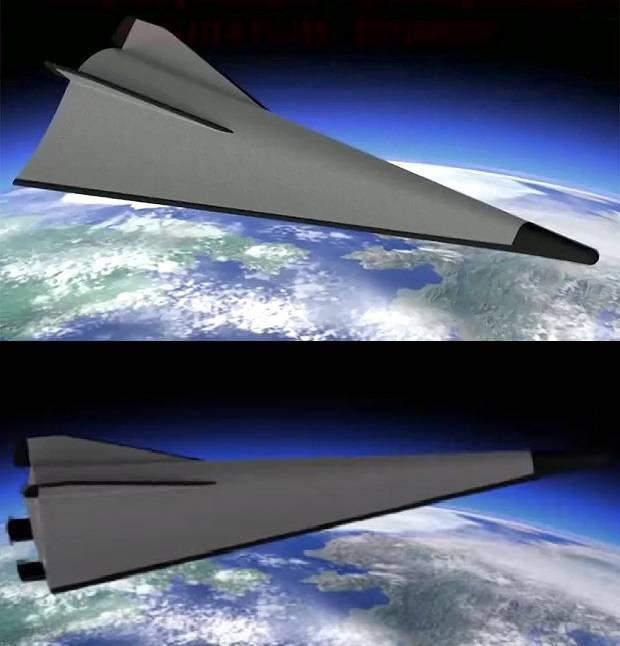
Testing and presentation of the Avangard missile system
An alternative solution is hypersonic missiles launched from strategic aircraft aviation, such as the American X-51 Waverider or the Russian 3M22 Zircon. The X-51 and 3M22 missiles have greater versatility compared to hypersonic warheads launched by launch vehicles and possibly lower cost. However, their range and speed are significantly less than those of the planning warheads - about 500-2000 km and 5-8 M (1,7-2,7 km / s), respectively. A lower speed and range will not allow for a reaction time comparable to that which allows for hypersonic gliding warheads. When striking a range of 6000-7000 or more, the total flight time of a bomber and a hypersonic missile will be about five hours, while a hypersonic planning combat unit can strike for half an hour, which can be critical for some missions.
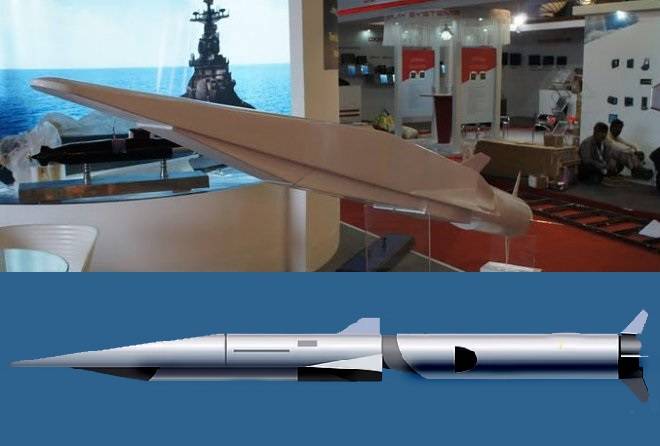
The above comparison does not mean the abandonment of one type or another of weapons, but only shows the niche of each of them. In this “division of labor”, hypersonic planning blocks are given the task of defeating high-priority goals - command posts, decision centers, etc.
Fast global punch and VIP terror
Article Strategic conventional forces: carriers and weapons the installation of hypersonic warheads on ICBMs was considered, the terms of which are in service are coming to an end. This decision is fully justified and it is it that is being considered by the US armed forces as part of the Fast Global Strike program.
The BSU program itself also causes skepticism among many, for some reason it is always opposed to nuclear weapons. In fact, it has no effect on the nuclear shield. Although in the START-3 treaty non-nuclear military equipment is considered on a par with nuclear, which could theoretically lead to a decrease in the number of US nuclear weapons, in fact, as soon as the BSU program is developed and the number of warheads begins to increase, the START-3 treaty will already expire and if not, the United States will withdraw from it with the same ease as it withdrew from the ABM Treaty and the INF Treaty, at the same time blaming Russia for this.
Another objection is that the use of BSU funds will begin the third world war. It should be understood that the United States does not in any way plan to use BSU funds against Russia at its current level of development of the armed forces. And against China too. But countries like Iran or Venezuela may well become a target for BSU, which will be delivered the first decapitation blow.
Article Strategic conventional weapon. Damage The strategic conventional weapon is formulated as: causing damage to the enemy, significantly reducing its organizational, industrial and military capabilities from a distance, minimizing or eliminating the likelihood of a direct combat collision with the armed forces of the enemy. To this we can add - as soon as possible.
The material resources spent on funds from the BSU will pay off handsomely by saving in forces and means of general forces. In some cases, for example, in the case of the liquidation of the leadership of the enemy, a military conflict may end without starting. The United States may well realize such a scenario, for example, in Venezuela. By means of BSU to liquidate the incumbent president, at the same time organizing another “color” revolution, and no Tanks, airplanes and ships will not help to avoid such a scenario.
Based on the foregoing, one can draw another conclusion - the weapon of the Quick Global Strike or the Strategic Conventional Weapon is an ideal tool for VIP terror, that is, the physical elimination of the enemy’s top leadership.
No other weapon has such capabilities. The mere presence of such type of Rapid Global Attack weapons, or Strategic Conventional Weapons, will force the enemy’s leadership to act prudently when making military, political and economic decisions, or make them live in danger of inevitable destruction.
In some cases, ICBMs may not be the most optimal medium for hypersonic glide warheads, or the cheapest. Are there any other more effective carriers for hypersonic planning warheads?
Reusable rocket as a carrier of hypersonic warheads
Promising reusable missiles based on commercial products can be the most effective and cheapest means of casting combat units.
Based on open information posted on the Internet, the casting height of hypersonic warheads should be about 100 kilometers. The estimated mass of Falcon HTV-2 hypersonic battle blogs should be 1100-1800 kg.
The payload of the Falcon-9 rocket, launched at the IEO (200 km), is 13-16 tons. The total mass of the second stage of the latest version of the Falcon-9 is 111 tons, the second stage is separated from the first at an altitude of about 70 km. The first stage of the Falcon 9 is planned to be used up to 10 times, and with maintenance after every 10 flights, it can be used up to 100 times.
It can be assumed that to launch hypersonic warheads, the first stage of the Falcon-9 launch vehicle is enough. The abandonment of the second stage with a mass of 111 tons will presumably allow to bring to the height of 100 km about 10 hypersonic warheads weighing 1100-1800 kg each.
On the basis of technologies implemented in commercial rocket science, other small reusable launch vehicles can be created for given loads, which allow the abandonment of one or two hypersonic warheads, followed by landing of the carrier and its repeated reuse.
If we talk about an increase in combat load, then we can not help but recall the plans of SpaсeX for the construction of a fully reusable two-stage BFR missile, with its possibility of putting payloads weighing up to 100 tons to the DOE. The Internet is already being discussed the possibility of the prospective use of BFR as an orbital bomber for striking with controlled tungsten rods.
If we draw an analogy using the first stage of the Falcon-9 LV, the first stage of the BFR LV - Super Heavy will be able to carry out the 55-85 hypersonic warheads.
On the one hand, the development of BFR has not yet been completed, so talking about its military use is somewhat premature. On the other hand, Elon Musk is determined to complete this missile. According to SpaEx plans, it should replace all missiles used by the company, including the Falcon-9 launch vehicle.
The question arises, why should such a promising development disappear? SpaсeX can well adapt the first stage of the Falcon-9 or simply sell to the military all the developments on this missile, fully focusing on BFR. The military, in turn, will receive a unique reusable platform for launching planning hypersonic warheads or other payloads.
Basing
The problem with reusable missiles is that, unlike bombers, you can’t put them on the airfield, however, the options for deploying such weapons are quite enough.
In the case of a launch vehicle with planning hypersonic warheads in the southern United States (the launch site at Cape Canaveral is taken as an example), practically all of Latin America will be in the affected area. If deployed in Alaska, most of Russia, China, all of North Korea will be in the affected area. This is provided that the flight range of the warheads will be 6000-7000 kilometers, and will not be intercontinental, as in the Avangard complex.
The United States can use the territory of its satellites to deploy launch vehicles with planning hypersonic warheads in Europe or Asia. It is unlikely that Poland, Romania, or Japan would dare to refuse such a smallness to their overlord.
In addition, given the fact that private military companies (PMCs) are already armed with combat aircraft, one cannot but imagine a scenario in which platforms for launching rockets with planning hypersonic warheads will be leased by PMCs and provided by the U.S. Armed Forces on request on a commercial basis.
And finally, one cannot exclude the possibility of creating offshore launch platforms similar to the Sea Launch commercial project. The overall dimensions of the Falcon-9 LV are comparable to those of the Zenit-3SL LV, so there should be no problems.
Considering that only the first stage with a combat load will need to be launched, two launch vehicles with ten planning hypersonic warheads on each can well be placed on a floating spaceport. When placing a floating spaceport in the Mediterranean Sea, almost all of Africa, the Persian Gulf, Pakistan, partially Central Asia, China, and most of the territory of the Russian Federation fall into the affected area. Landing of the LV can be carried out on existing ASDS (Autonomous spaceport drone ship - autonomous unmanned spacecraft-spacecraft) platforms used for landing the first stage of the Falcon-9 LV, or similar vessels / platforms developed on their basis.
One may ask: if Russia or China, as nuclear powers, are not considered as targets for BSU, then why is it indicated that their territory is in the affected area? The answer is simple, BSU is a factor that will have to be taken into account. If the deployment of Mk-41 launchers in Europe caused so much noise, what will happen when a floating spaceport with LV with planning hypersonic warheads appears in the Mediterranean Sea ...
The financial side of the issue
The cost of the first stage of the launch vehicle is 60 – 70% of its total cost. The launch cost declared for Falcon-9 is 60-80 million dollars, respectively, the cost of the first stage will be 36-56 million dollars. Even taking into account the tenfold use of the first stage of the Falcon-9, the cost of withdrawal will be 3,6-5,6 million dollars, the cost of fuel will be about 500 thousand dollars to launch. Thus, for 10 blocks, the cost of casting will be about 400-600 thousand dollars per block (not counting the cost of the block itself). With the resource of the first stage of Falcon-9 in 100 launches, the cost of each launch will fall by almost an order of magnitude. Of course, it is necessary to take into account other expenses - maintenance, repair, transportation, etc., but other weapons systems are not without additional costs. For example, an hour of flight of the B-2 costs more than 150 thousand dollars, and when hit at a distance of 7000 km, the total flight time will be 10 flight hours, i.e. one flight will cost 1,5 one million dollars.
And what about us?
Apparently, by hypersonic weapons in general, and by planning hypersonic warheads in particular, we are ahead of the rest.
But with reusable launch vehicles we have serious problems, more precisely, there are no problems, since there are no reusable launch vehicles themselves. But there are projects, including interesting ones, some of which may well be adapted for military use. Perhaps, as often happens in our country, this will give life to their civilian modifications. However, we’ll talk about this in the next article.
- Andrey Mitrofanov
- topwar.ru, topcor.ru, spacex.com, linkspace.com.cn, spacelin.ru, popmech.ru, s7space.ru
- Strategic conventional weapon. Damage
Strategic conventional forces: carriers and weapons
The militarization of space is the next step of the United States. SpaX and orbiting lasers
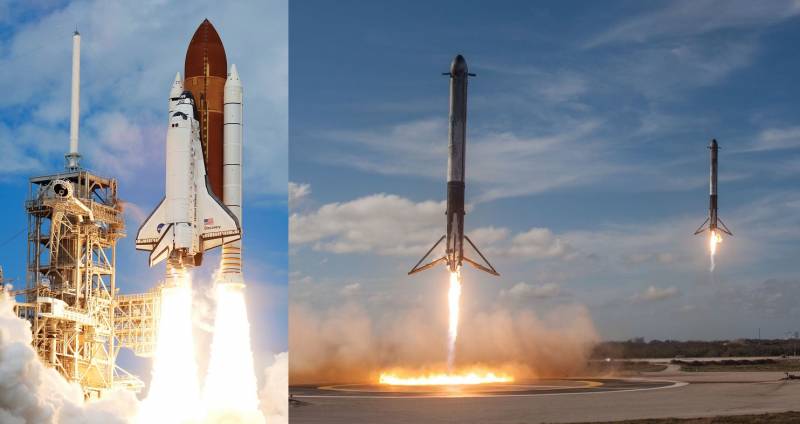
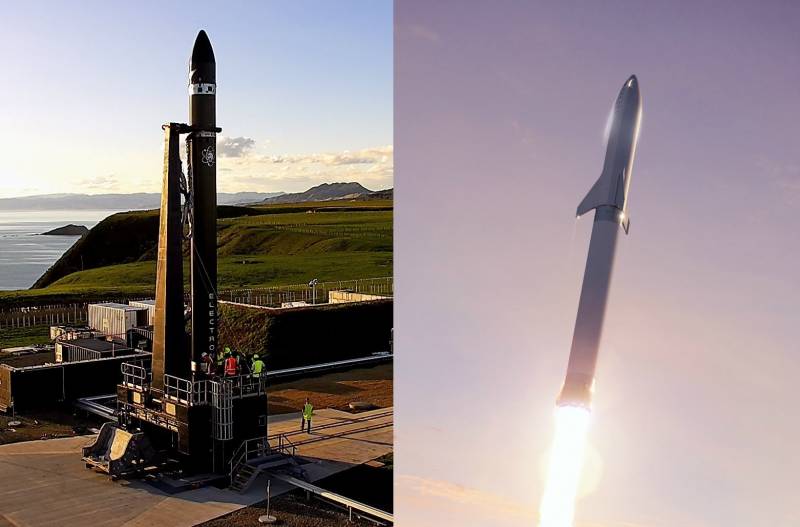
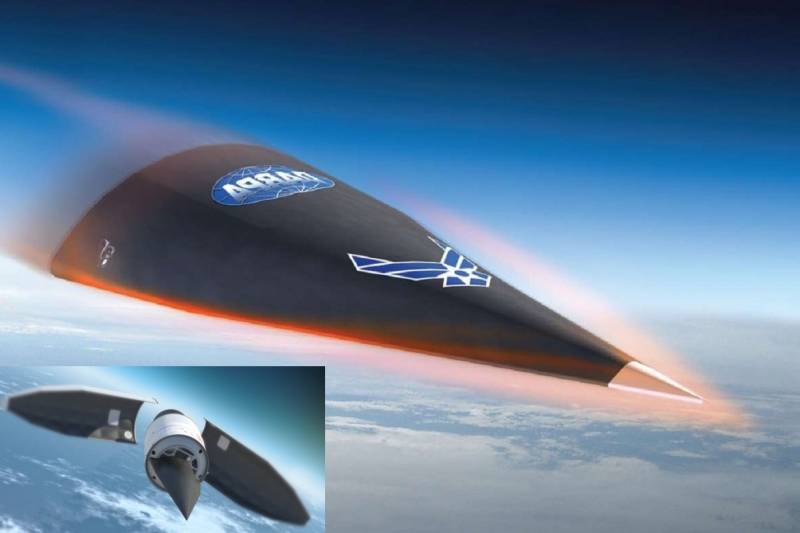
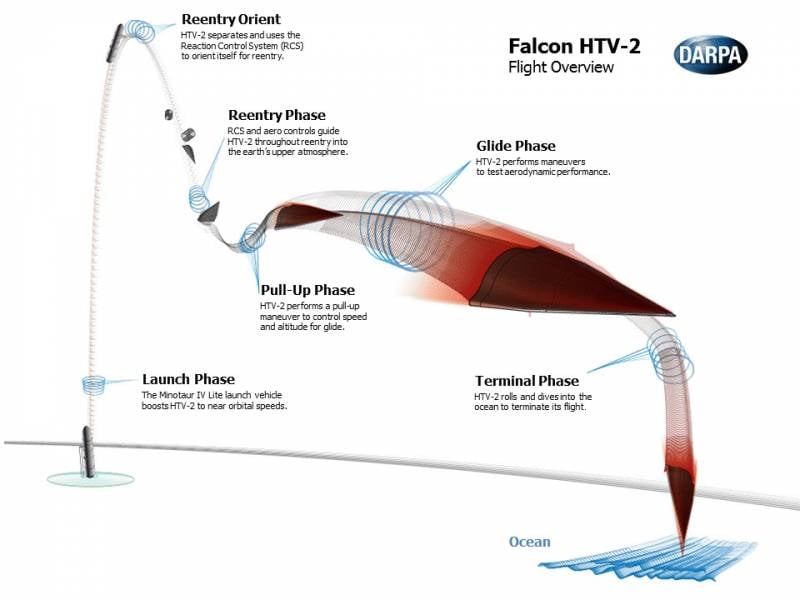
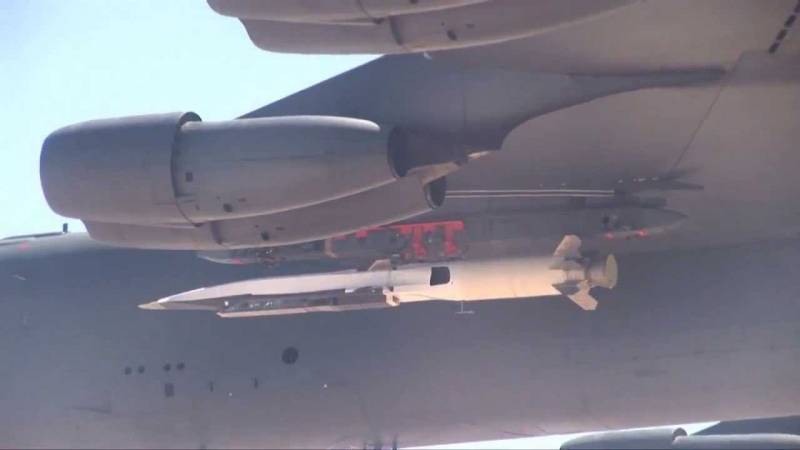
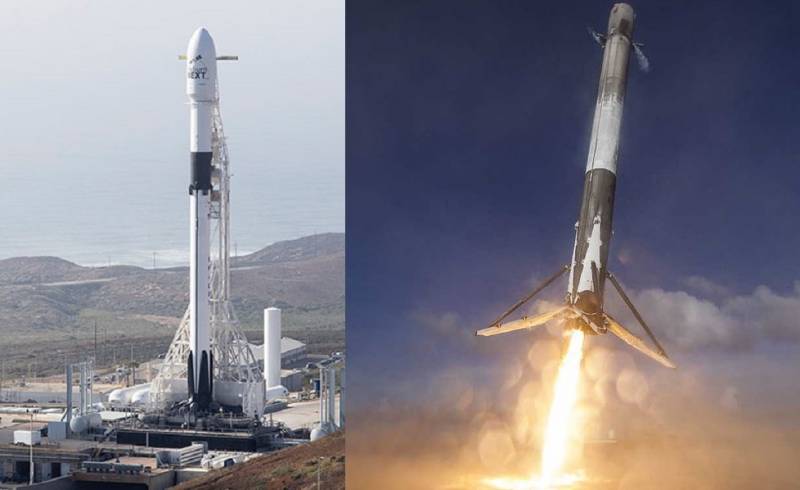
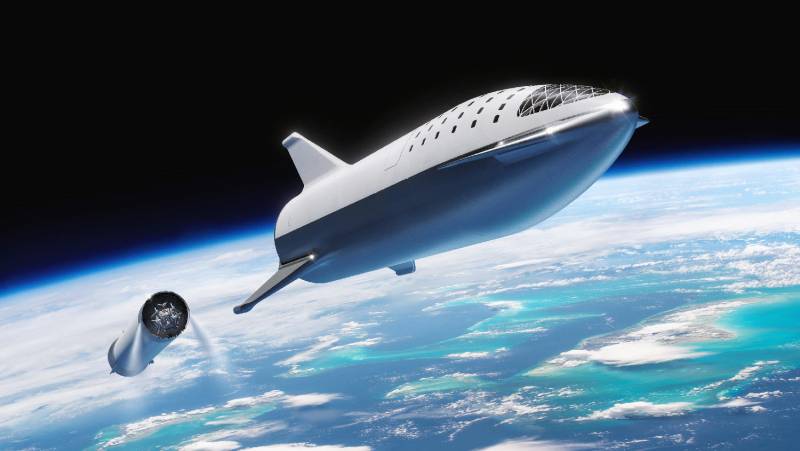


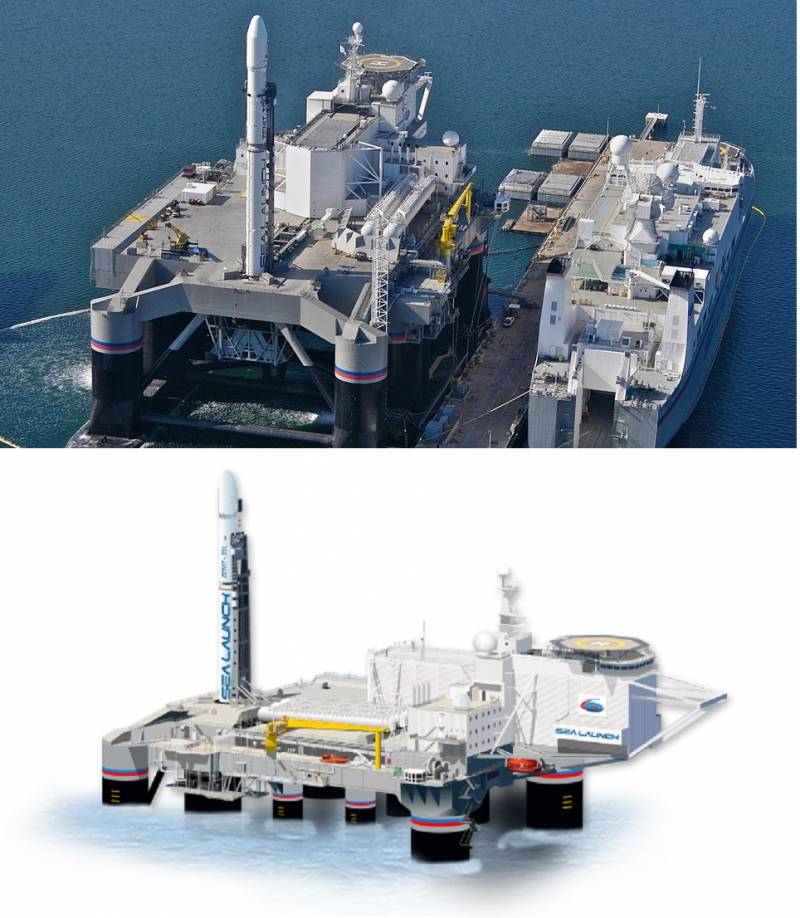
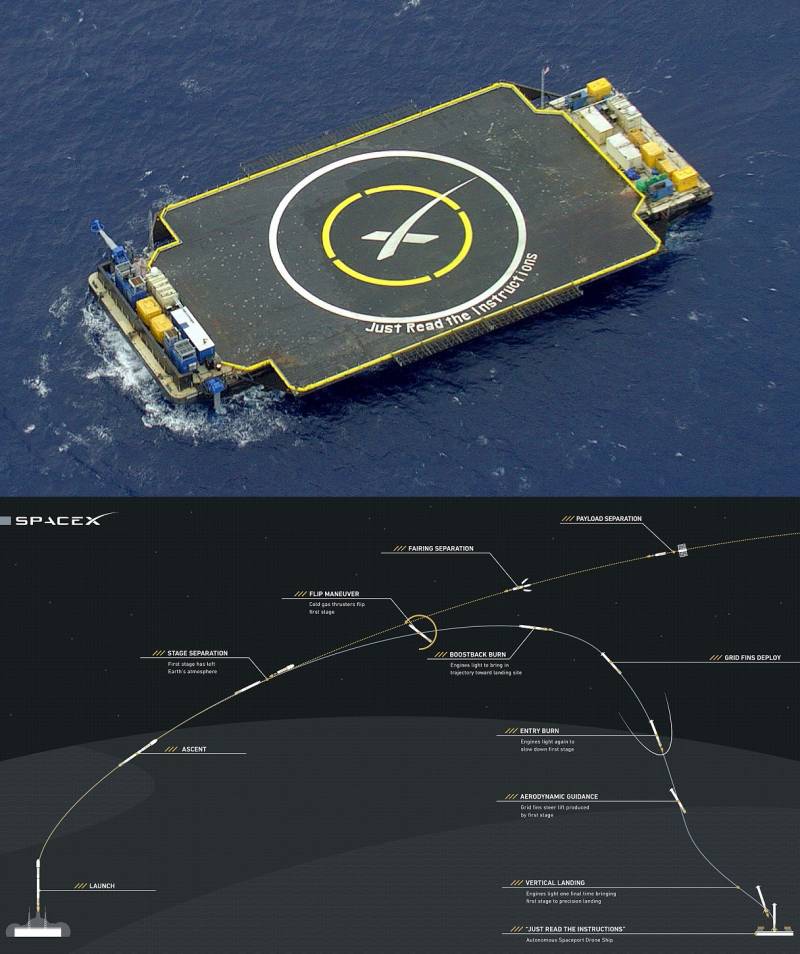

Information